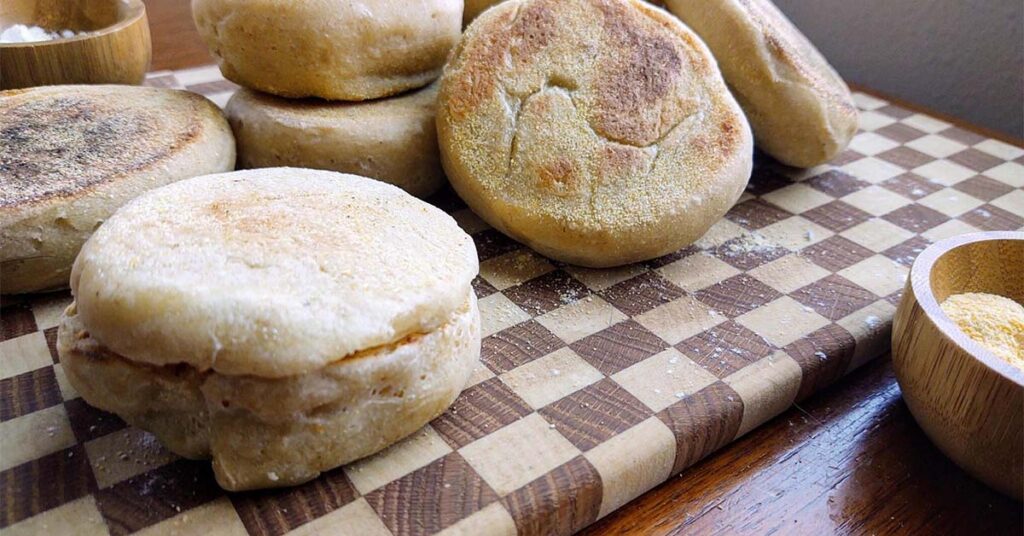Adopting a gluten-free diet has become increasingly popular over the years, catering to those with celiac disease, gluten intolerance, and wheat allergies. Among the many adaptations to traditional recipes, gluten-free English muffins stand out as a delightful alternative, offering the same comforting taste and texture without the gluten. Consequently, this article delves into everything you need to know about making your own gluten-free English muffins, from the essential ingredients to serving suggestions and storage tips.
The Rise of Gluten-Free English Muffins
Historically, the tradition of English muffins dates back centuries, originally hailing from the United Kingdom. However, the traditional recipe contains gluten, making it unsuitable for those on a gluten-free diet. Fortunately, the rise of gluten-free options has been a game-changer, allowing everyone to enjoy this breakfast staple. For more information on gluten intolerance and celiac disease, the Celiac Disease Foundation offers extensive resources.
Moreover, the popularity of gluten-free English muffins is not just about dietary needs. It also reflects a broader embrace of healthier eating habits and the joy of baking alternatives that taste just as delicious as their gluten-containing counterparts. Importantly, the secret to a successful gluten-free English muffin lies in the ingredients and their combination.

Ingredients
Creating the perfect gluten-free English muffin requires a blend of specific ingredients that mimic the texture and flavor of traditional ones:
- Gluten-Free Flour Blend: The cornerstone of any gluten-free baking recipe, a high-quality blend is crucial. Look for mixes that contain rice flour, tapioca starch, and potato starch.
- Xanthan Gum: Adds elasticity and stickiness to the dough, mimicking the role of gluten.
- Tapioca Starch/Flour: Enhances the chewiness and texture of the muffins.
- Instant Yeast: Essential for rise and fluffiness.
- Milk (or Dairy-Free Alternative): Adds moisture. For dairy-free options, almond or coconut milk works well. Vegan Baking Tips provide more insights on dairy and egg substitutes.
- Egg White (or Substitute): Provides structure. Aquafaba is a popular vegan substitute.
- Neutral Oil: Keeps the muffins moist.
How to Make Gluten-Free English Muffins
Making gluten-free English muffins is a straightforward process that yields delicious results:
- Mix the Dry Ingredients: Start by combining the gluten-free flour blend, xanthan gum (if not included in your blend), tapioca starch, and instant yeast.
- Add the Wet Ingredients: Next, mix in warm milk, egg white (or substitute), and oil into the dry ingredients to form a sticky dough.
- Let the Dough Rest: Then, allow it to chill in the refrigerator, which helps develop the flavors and texture.
- Shape and Cook: With a light touch, form the dough into rounds and cook in a skillet or on a griddle until golden brown.

Serving Suggestions
Gluten-free English muffins are versatile and can be enjoyed in numerous ways:
- Enjoy them topped with butter, jam, or peanut butter for a quick breakfast or snack.
- Use them as the base for Eggs Benedict or a hearty breakfast sandwich.
- Serve them with your favorite spreads and toppings for a customizable treat.
Storing and Freezing
To maintain freshness, store gluten-free English muffins properly:
- At Room Temperature: Keep them in an airtight container for up to 2 days.
- Freezing: For longer storage, split and wrap them individually before freezing. They can be kept frozen for up to 3 months. For detailed guidance on food storage and preservation, visit Food Storage and Preservation.
FAQs
- Are all English muffins gluten-free? No, traditional English muffins contain wheat flour. Always look for gluten-free labels.
- Can I make these muffins dairy-free or vegan? Yes, by substituting milk with a dairy-free alternative and using an egg substitute.
- How do I achieve nooks and crannies in gluten-free English muffins? The key lies in the dough’s hydration and cooking method. Fork-splitting the muffins after cooking also helps create those beloved nooks and crannies.
In conclusion, gluten-free English muffins offer a delicious, healthy alternative to traditional English muffins, perfect for those avoiding gluten or seeking new baking adventures. With the right ingredients and techniques, you can enjoy these delightful muffins any time of day, topped with your favorite spreads or used as the base for a variety of dishes.

